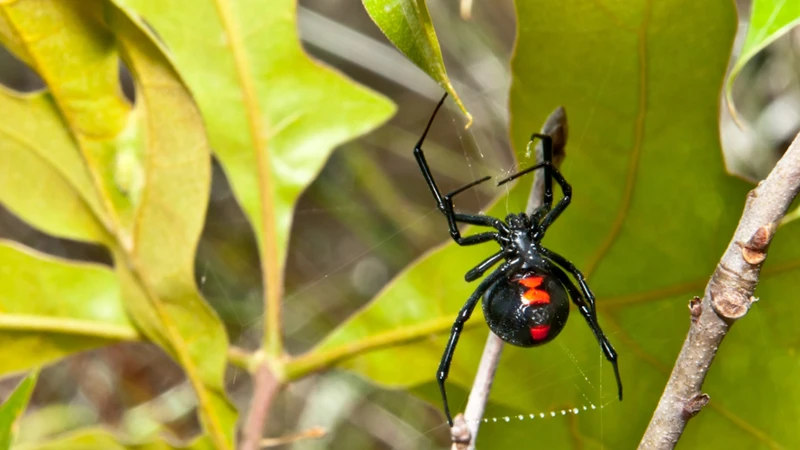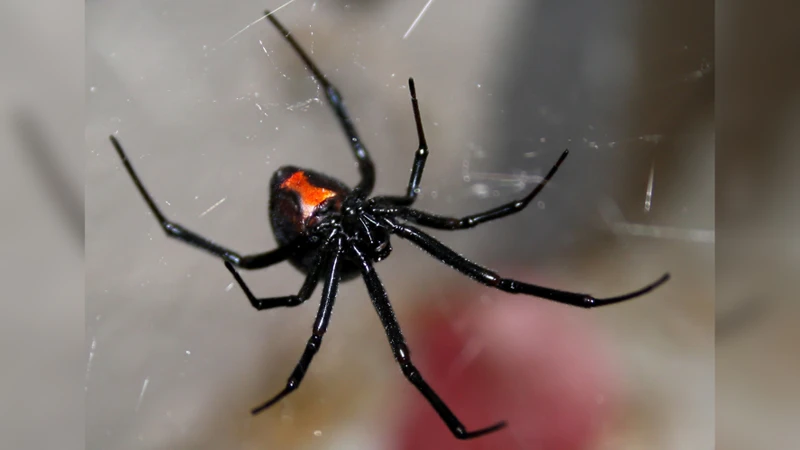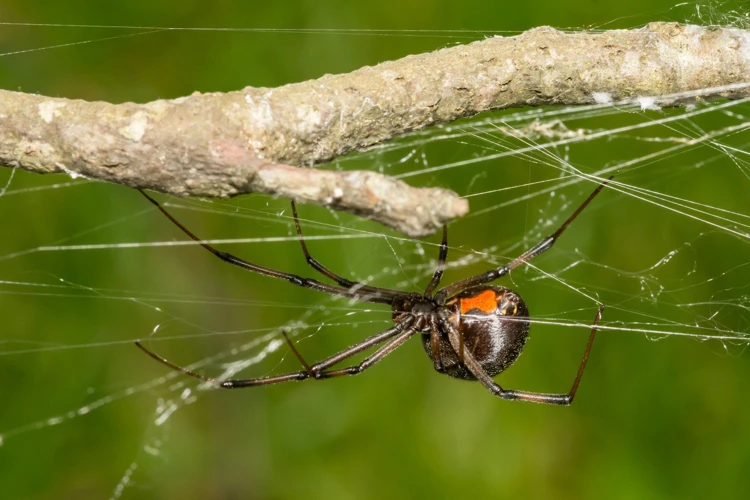In a world full of curious creatures, black widow spiders have always piqued our interest. With their striking black bodies and bright red markings, they certainly stand out. Their reputation as venomous arachnids has also made them a topic of fascination, and even fear, for many people. However, when it comes to understanding their habitat, the impact of lighting on their environment is often overlooked. This raises the question: can lighting really affect the presence of black widow spiders in an area? In this article, we will delve into the biology and behavior of black widow spiders, how lighting affects their habitat, and what measures can be taken to modify lighting and reduce their population. We will also discuss precautions to take in order to avoid black widow spider bites. So, let’s explore this intriguing topic together.
Understanding the Habitat of Black Widow Spiders

The habitat of Black Widow spiders is a complex and important aspect to consider when it comes to controlling their population. It’s vital to understand the various factors that contribute to their habitat and the behaviors and biology of these spiders. By doing so, we can effectively modify their environment and reduce the possibility of bites. As these spiders are known to thrive in warm and humid environments with cluttered shelters, it’s important to examine the abiotic factors, controlling the vegetation, and the spiders’ interactions in their habitat to get a complete picture of how to manage their population effectively. Humidity, temperature, and the impact of climate change can also have crucial implications for Black Widow spider habitats.
Behavior and Biology of Black Widow Spiders
Black Widow spiders are known for their distinctive black color and the red hourglass shape on their abdomen. They are commonly found in warm and dry regions around the world, including the United States, Africa, and Asia. These spiders are commonly associated with dark and dry environments such as closets, garages, woodpiles, trash cans, and attics, but they may also be found in damp areas such as basements and barns.
Behavior: Black Widow spiders are not aggressive and will only bite humans if they feel threatened. They are known to become more aggressive when defending their eggs. These spiders are known to hide in dark and dry areas and spend most of their time in their webs waiting for prey to come to them. They have poor eyesight and rely on vibrations to sense prey. Black Widows are nocturnal and actively hunt during the night.
Biology: Black Widow spiders are invertebrates and belong to the family Theridiidae. These spiders are sexually dimorphic, meaning that females are larger than males. Females weave irregular webs in which they hang upside down and capture prey that comes into contact with the web. Adult females can lay up to 750 eggs at a time and the eggs hatch within a few weeks. The spiderlings will stay close to the nest for a few days before dispersing.
Black Widow spiders have specific habitat requirements and are often found in areas with low vegetation, high temperatures, and low moisture levels. Their preferred habitat is dry, dark, and clutter-free. They tend to build their webs in undisturbed areas that are difficult to reach, which is why they are commonly found in garages and basements. Black Widows are also known to seek shelter in debris, crevices, and cracks where they can hide from predators and the elements. These spiders rely on the abiotic factors of their environment such as temperature, humidity, and precipitation, which can impact their behavior and population levels.
Understanding the behavior and biology of Black Widow spiders is crucial for managing their population, addressing their interactions within their habitat, and reducing the risk of bites to humans. By addressing the factors that attract and sustain Black Widow spider populations, such as lighting and moisture levels, we can lower the chances of encountering them in our daily lives. To learn more about the abiotic factors that impact Black Widow spider habitat, you can visit https://example.com/abiotic-factors-black-widow-habitat/.
How Lighting Affects Black Widow Spiders’ Habitat

It’s fascinating how lighting can have a significant impact on the habitat of Black Widow Spiders. These spiders are infamous for their venomous bites that can be fatal to humans. However, not many people know that lighting can either attract or deter them. In this section, we will explore the different effects of lighting on Black Widow Spiders in their habitat. We will look into the science behind their attraction to light and discuss how this knowledge can be used to modify indoor and outdoor lighting to reduce their population. Understanding this aspect of their habitat is crucial in controlling their threat. But first, let’s take a closer look at the biology and behavior of Black Widow Spiders. You can read more about their interactions with other animals and their habitat in this article (source).
The Attraction to Light
Black widow spiders are known for their attraction to light, as they are often seen around illuminated areas at night, especially during the warm summer months. This behavior is called phototaxis. The reason behind this attraction to light is not yet clearly understood, but it is believed to be linked to the spider’s natural habitat.
Here are some possible reasons why black widow spiders are attracted to light:
- Light attracts prey – Black widow spiders are nocturnal hunters, which means they hunt at night. Artificial lights can attract insects, which in turn can attract black widow spiders. This is because black widow spiders feed on insects such as moths, beetles, and flies.
- Light mimics the sun – Black widow spiders usually build their webs in dark, quiet, and sheltered areas during the day. But at night, they need to move around to catch their prey or reproduce. Since black widow spiders are known to use the positions of the sun, moon, and stars to find their way, they may also associate light with the sun.
- Bright light disorients spiders – Black widow spiders are known to be sensitive to bright light, which can cause temporary blindness or disorientation. In some cases, this can actually make it easier for humans to capture or relocate black widow spiders.
While it is not entirely clear why black widow spiders are attracted to light, it is important to understand their behavior in order to reduce their population in certain areas. By reducing the light source, we can discourage black widow spiders from building their webs or hunting in that area.
If you want to read more about black widow spider habitats, you can check out our article on black widow spider habitats.
The Science Behind Light and Its Effects on Black Widow Spiders
Black widow spiders have a unique relationship with light, and scientific studies have shown that certain types of light can have a significant impact on their behavior and habitat. According to research, black widow spiders are attracted to UV light, which is commonly emitted by many outdoor lights. This light closely mimics the wavelengths produced by the sun, which is why spiders are naturally drawn to it.
However, it is important to note that not all light sources will attract black widow spiders. Incandescent bulbs, for example, emit less UV light and are therefore less likely to attract these spiders. For this reason, it is recommended that homeowners switch to incandescent bulbs or yellow bug lights if they are concerned about the presence of black widow spiders on their property.
Exposure to certain types of light can also have negative effects on black widow spiders. For example, too much exposure to blue light can disrupt the spider’s natural circadian rhythm and negatively impact the reproductive health of female spiders; resulting in lower egg production and smaller egg sacs. This can have a significant impact on the population size of black widow spiders and the overall health of their habitat.
It is also essential to understand that light can indirectly affect black widow spiders by influencing their prey. Excessive outdoor lighting can attract a variety of insects, which in turn can create an abundant food supply for spiders. This surplus of food can encourage increased breeding and population growth among the spiders, making it more difficult to control their presence.
The science behind lighting and its impact on black widow spiders is multifaceted. While certain types of light can attract and benefit these spiders by providing a food source, too much exposure to harmful wavelengths can have a negative impact on their habitat. Homeowners should take precautions with their lighting choices to maintain a balance between the natural appearance of the habitat and the need to control the population of black widow spiders.
Reducing Black Widow Spiders’ Population with Lighting Modifications

As we have already discussed, Black Widow spiders are not only dangerous but also find ways to thrive in human-made habitats. However, modifying lighting can be an effective way to reduce their population indoors and outdoors. The right lighting modifications can discourage Black Widow spiders from nesting in areas that invite them. In this section, we will delve into different ways of modifying lighting and controlling the spider population. We will take a closer look at the effects of lighting on Black Widow spiders and how light can be adjusted to deter them.
How to Modify Outdoor Lighting
When it comes to modifying outdoor lighting to reduce black widow spider populations, there are some effective methods that homeowners can try. Here are some changes you can make to your outdoor lighting to keep these spiders at bay:
- Replace white bulbs with yellow bulbs: White lights tend to attract more insects, which in turn attract spiders. By switching to yellow bulbs, you can reduce the number of insects around your home and decrease the chance of spider infestations.
- Install motion-sensitive lighting: Instead of keeping your outdoor lights on all night, consider installing motion-sensitive lighting. These lights will only turn on when they detect motion, helping to deter spiders and other pests.
- Raise your outdoor lights: Spiders are drawn to ground-level lighting, so installing lights at a higher height can help reduce the number of spiders near your home.
- Keep lights away from doors and windows: To prevent black widow spiders from making their way inside your home, keep outdoor lights away from doors and windows. This will help discourage spiders from building webs near entryways.
By implementing these outdoor lighting modifications, you can help reduce the black widow spider population around your home and create a safer habitat for you and your family. For more information on other ways to control black widow spider habitats, check out our article on controlling vegetation in black widow habitats.
How to Modify Indoor Lighting
One of the best ways to reduce the population of black widow spiders in your home is to modify your indoor lighting. Some simple changes to your lighting can make your home less appealing to black widow spiders and thus reduce the likelihood of bites. The following table lists some ways to modify your indoor lighting to keep black widow spiders at bay:
| Method of Modification | Description |
|---|---|
| Use amber or red-colored light bulbs | Black widow spiders cannot see red light, so using amber or red-colored light bulbs can make your home less attractive to them. You can use red LED lights outside your home, as well. |
| Turn off unnecessary lights | Since black widow spiders are attracted to light, it’s best to turn off unnecessary lights in your home. For example, you can turn off lights in empty rooms, or use a dimmer switch to reduce the intensity of the light. |
| Avoid using outdoor lights indoors | Outdoor lights can attract black widow spiders indoors if they are close enough to the windows. So, it’s best to avoid using outdoor lights indoors. |
| Use motion sensor lights | Motion sensor lights can be an effective way to keep black widow spiders out of your home. They are only activated when motion is detected, so they don’t stay on all the time and attract black widow spiders. |
By modifying your indoor lighting in these ways, you can create an environment that is less attractive to black widow spiders and reduce the chances of a bite. However, it is important to remember that lighting modifications alone may not be enough to completely eliminate the risk of a black widow spider infestation. To further reduce the risk, it’s also a good idea to take steps to eliminate other factors that attract black widow spiders, such as moisture and clutter. You can read more about this in our article on moisture and black widow habitat.
Precautions to Take to Avoid Black Widow Spider Bites
Black Widow Spiders are one of the most dangerous spiders in the world, and their bites can cause severe pain and even death. It is essential to take necessary precautions to avoid such occurrences.
Wear Protective Clothing: It is vital to take care of yourself while in spider habitats. Hence, it is essential to wear protective clothing, including long-sleeved shirts, long pants, and gloves.
Avoid Sticking Your Hands into Dark Spaces: Black Widow Spiders usually hide in dark and concealed places like cracks, crevices, and woodpiles. It is essential to avoid sticking your hands into such dark spaces to prevent spider bites.
Avoid Keeping Piles of Unused Items: Black Widow Spiders usually take shelter in piles of unused items like furniture, gardening tools, and boxes. To reduce the chances of being bitten, it is necessary to avoid keeping piles of unused items.
Inspect Your Clothing and Shoes: Black Widow Spiders often hide in clothing and shoes. Before wearing, it is essential to inspect and shake out your clothing and shoes to check for spiders.
Avoid Touching Spiders: It’s necessary to avoid touching spiders, especially Black Widow Spiders. If you see a spider, back away slowly and give it a chance to move away. It is also crucial to avoid trying to kill or capture the spider, especially if you do not have experience with spider handling.
While following these precautions, it is also essential to stay informed about the Black Widow Spider’s habitat and threats they pose. You can learn more about their habitats and threats by following this link. In recent times, climate change has caused a shift in the Black Widow Spider’s habitat, posing a new threat. For more information about climate change and its impact on Black Widow Spider habitats, you can follow this link. If you are dealing with a Black Widow Spider infestation in your home, you can find helpful tips to deal with it by following this link.
Conclusion
In conclusion, it is evident that the lighting surrounding the habitat of black widow spiders plays a crucial role in their behavior and reproduction. As nocturnal predators, black widow spiders are attracted to light sources, which can bring them closer to humans and increase their population in certain areas.
However, by understanding the science behind light and its effects on black widow spiders, we can modify our lighting to reduce their population and minimize the risk of spider bites. Outdoor lighting can be modified by using yellow, insect-resistant bulbs and redirecting lights away from spider habitat areas. As for indoor lighting, it’s best to keep the lights off whenever possible and use low-level, yellow or amber bulbs.
Taking precautions to avoid black widow spider bites is also important. By wearing gloves when handling outdoor items and shaking out clothing before wearing it, we can reduce the risk of contact with these venomous spiders.
In summary, modifying our lighting and taking safety precautions can help reduce the population of black widow spiders and keep humans safe from their venomous bites. Let’s all do our part to create a safer environment for both humans and spiders.
Frequently Asked Questions
What is the habitat of black widow spiders?
Black widow spiders can be found in warm and dry places such as woods, gardens, and houses.
What do black widow spiders eat?
Black widow spiders feed on insects, other spiders, scorpions, and even small rodents.
Are black widow spiders dangerous?
Yes, black widow spiders are venomous and their bites can cause severe pain, muscle cramps, and even paralysis. In rare cases, they can be fatal.
What attracts black widow spiders?
Black widow spiders are attracted to warm and dry places, cluttered areas, and prey.
How can lighting affect black widow spiders’ habitat?
Lighting can attract prey for black widow spiders, therefore attracting the spiders themselves. It can also alter their behavior and reproductive patterns.
What kind of lighting modifications can reduce the black widow spider population?
Modifying outdoor lighting by reducing its intensity, using yellow or amber bulbs, and placing it away from homes can help reduce the black widow spider population. Modifying indoor lighting by closing blinds and curtains can also help.
Do black widow spiders only live in certain regions?
No, black widow spiders can be found in many places around the world, including North and South America, Europe, Asia, and Australia.
How can I avoid getting bitten by a black widow spider?
Avoid reaching into cluttered areas, wear gloves and long-sleeved clothing when gardening or cleaning, and remove webs and spiders if found. Seek medical attention if bitten.
What should I do if I find black widow spiders in my home?
Contact a professional pest control service to remove black widow spiders from your home safely and effectively.
Can black widow spider bites be treated?
Yes, black widow spider bites can be treated with antivenom, pain medication, and muscle relaxants. Seek medical attention immediately if bitten.







